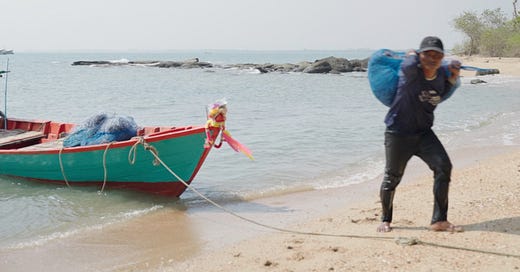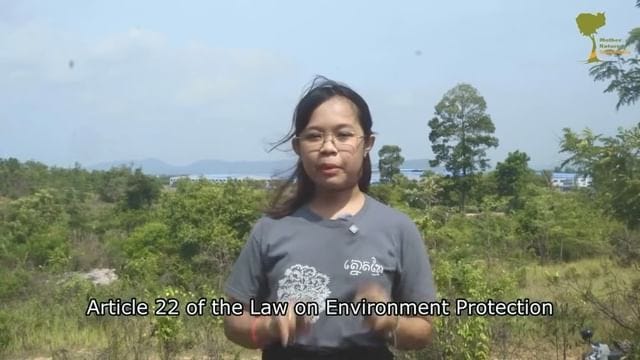Dear eco-nnecters,
In this issue we travel to Cambodia, where land grabs and illegal trawlers are taking hold of the country’s beautiful coast.
Read the story below!
🗞️ In Climate News
🇵🇬 Major landslide in Papua New Guinea buries thousands of people
🔬 Researchers find a new method for producing low-emission concrete on a large scale
🇦🇺 Indigenous people and NGO grow a wildlife corridor in the world’s oldest rainforest in Australia
🏭 No need for countries to issue new oil, gas or coal licenses, study finds
🇮🇳 Delhi’s residents struggle to cope in record-breaking heat with temperatures over 52ºC
🇦🇫 Children pulled from mud as hundreds die in severe flooding in Afghanistan
🇩🇪 Five dead and thousands evacuate in Germany amidst devastating floods.
📈 Cool Trends
♾️ eco-story
🇰🇭 Cambodia’s coast faces a double threat
originally written for Mongabay.com
The double threat, from land and sea, extends beyond Koh Rong to much of the Cambodian coastline. Illegal fishing, chiefly embodied by rampant, unchecked trawling in protected and prohibited waters, has devastated fish stocks, trashed marine ecosystems, and left coastal communities in dire poverty, according to the more than 30 people Mongabay spoke to across Koh Kong and Preah Sihanouk provinces in March 2024.
At the same time, the land is being sold out from under them as roughly 225 kilometers of Cambodia’s 435-kilometer coastline (140 out of 270 miles) has been sold off to Cambodia’s tycoon class since 2000, with a slew of new projects announced in the last five years closing off access to the sea and piling more pressure on coastal fishers whose livelihoods were already hanging by a thread.
🌏 The Culture Column
📺 What we’re watching: Cambodian environmental activist Ly Chandaravuth fights for nature and his freedom
📸 Profile of the week: @mothernaturecambodia
📖 What we’re reading: The Ecology of Freedom, Murray Bookchin
🤯 Shocking fact we learnt this week: For years, government agencies aided and abetted the extraction and smuggling of millions of tons of marine sand from Koh Kong's estuaries to several countries.






Hey econnect! If you're interested in another way to make cement more CO2 absorbent, have a read through this: https://www.sciencedirect.com/science/article/pii/S221450952400010X#:~:text=The%20incorporation%20of%20biochar%20in%20concrete%20also%20enhances%20its%20thermal,et%20al.%2C%202023).
I'm working for a company called Biofabrik and their machine to make biochar. If you're interested about the news and the process behind that, lmk! It will get more important for the building industry in the near future anyway. My email is klara.haertl@biofabrik.net .